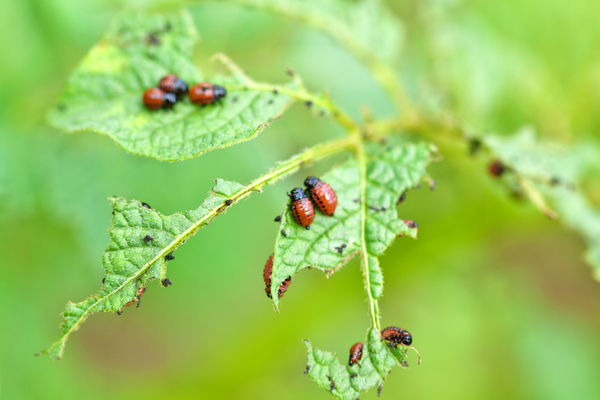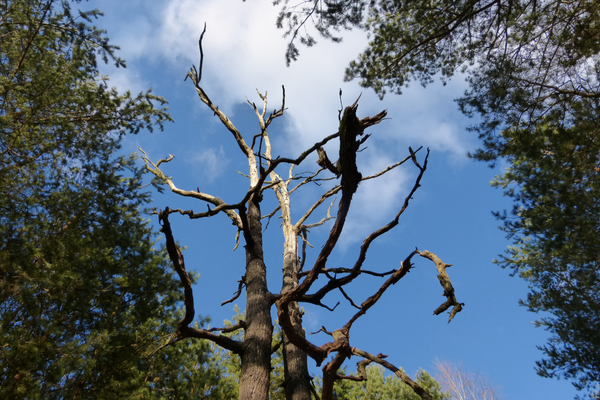Beyond diseases, a variety of insects can pose a threat to your trees. Some are a minor nuisance, while others can cause rapid and severe damage. Knowing which pests to look for can help you stop an infestation before it gets out of control. Regular inspection of your trees, from the trunk to the leaves, is a homeowner’s best defense.
Bagworms
Bagworms are peculiar pests that are often mistaken for small pinecones or debris hanging from branches. The “bag” is a protective, spindle-shaped cocoon that the caterpillar creates from silk, needles, and bits of twigs from its host tree. These bags, which can be one to two inches long, are incredibly effective camouflage.
The damage is done by the caterpillar feeding inside the bag. They defoliate trees, and they have a strong preference for evergreens. Leyland cypress, arborvitae, and juniper are common targets in Rock Hill and can be stripped of their foliage in a surprisingly short time. Deciduous trees can also be attacked.
Control depends on the time of year. During the fall and winter, the bags contain the females’ eggs. For small infestations on smaller trees, simply hand-picking and destroying these bags is a very effective method of tree pest control. Once the eggs hatch in late spring, the tiny caterpillars emerge and begin feeding. At this stage, treatment options for larger problems involve insecticides that are best applied by a professional to get complete coverage.
Aphids
Aphids are small, soft-bodied insects that can appear in large numbers, typically clustered on new growth and the undersides of leaves. They feed by piercing plant tissue and sucking out the sap. An early sign of an aphid problem is often curled, stunted, or yellowing leaves.
As they feed, aphids excrete a sticky, sugary substance called “honeydew.” This substance drips down onto lower leaves, branches, and anything located beneath the tree, like your patio furniture or car. This honeydew is not only a nuisance but it also promotes the growth of a black fungus called sooty mold. While sooty mold itself does not harm the tree directly, it can cover leaves and, like powdery mildew, interfere with photosynthesis.
Fortunately, aphids are a common problem and often can be managed without serious intervention. For a light infestation, a strong spray of water from a garden hose is sometimes enough to dislodge them. Encouraging natural predators like ladybugs and lacewings is also a great organic approach. If the population becomes too large, insecticidal soaps or horticultural oils are the next step for effective tree disease treatment near me.
Emerald Ash Borer (EAB)
The Emerald Ash Borer is one of the most destructive invasive pests in North America, and it represents a grave threat to all ash tree species in our region. This is a pest that every Rock Hill resident with an ash tree needs to watch for. The adult beetle does minimal damage, but its larvae feed on the inner bark of ash trees, destroying the tissues that transport water and nutrients. This effectively starves the tree.
The tell-tale signs of an EAB infestation include a thinning canopy, particularly from the top down. You may see increased woodpecker activity, as they feed on the larvae beneath the bark. As the adult beetles emerge, they leave distinctive D-shaped exit holes in the bark, each about 1/8 inch in diameter.
Prevention and early detection are absolutely critical. Once a tree shows significant signs of decline, it is often too late to save. If you have an ash tree, professional preventative treatments are the only way to protect it. If you suspect your ash tree is infested, it is imperative to get a confirmed diagnosis from an experienced arborist. The team at Niwaki Tree and Shrub, with over 26 years of experience in tree care, can provide the right advice and treatment plan.


